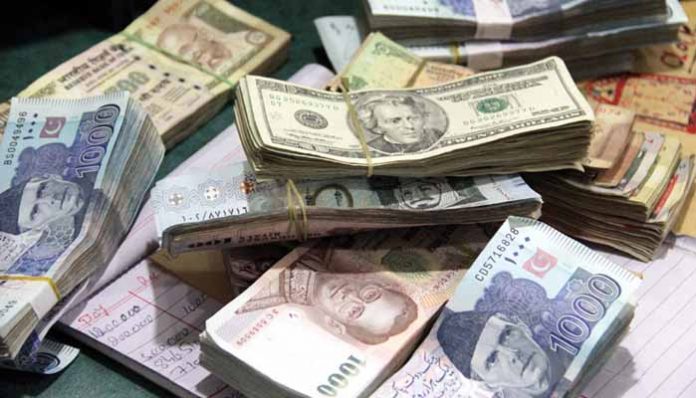
LAHORE: The rupee gained strongly against the dollar in the inter-bank market on Wednesday, as it regained Rs1.92 to trade at Rs132.
The rupee was trading at Rs132.80 rupees in the inter-bank market, gaining Rs1.10 initially against the greenback on Wednesday morning before rising a further Rs0.89, closing at Rs132.016, according to the State Bank of Pakistan.
Cumulatively, the rupee ended up gaining Rs1.90 against the dollar in the inter-bank market on Wednesday.
And in the kerb market, the rupee was trading at Rs134.0 against the greenback as per latest reports.
Consequently, a recovery in the rupee against the dollar helps reduce the debt burden and following this gain, the debt burden decreases by Rs180 billion, said an analyst.
This follows the decision of Saudi Arabia to provide $3 billion to Pakistan for averting a balance of payment crisis and boost foreign exchange reserves which had dwindled to $8 billion barely sufficient to provide 1.5 months import cover.
“Appreciation of the dollar today was in reaction to Saudi package of a soft loan and oil credit to the tune of $6 billion, this is a positive step and will alleviate short-term pressures, is like a sort of Panadol for our economy.
However, this would not address the root cause of the problem and would just buy some time until the IMF loan disbursements, which can be expected early next year,” said Pak Kuwait Investment Co AVP Research Adnan Sheikh.
“As for the rupee strength, I believe this is short-term and it would be under pressure again once the euphoria of this news subsides unless other friendly countries like China and Malaysia offer us some handouts over the next week or so,” he added.
Furthermore, Mr Adnan said, “These friendly country packages along with domestic revenue measures and depreciation would help put is in a better position to negotiate with the IMF.”
Also, KSA decided to extend a one-year deferred payment facility for oil imports to Pakistan worth up to $3 billion which would provide breathing space to the oil import and help rein in the rising current account deficit.
In a comment to Profit, Samiullah Tariq Arif Habib Limited’s Head of Research said,” I think that the Saudi deposit and oil facility played an important role in boosting the sentiment at the currency market as well as the equity market.”
“However, as FY19 current account deficit would although remain at $14 billion, which is lower 225 lower than last year’s $18 billion, there would be a need to go to the IMF, to finance the deficit as well as debt repayments,” he added.
On October 9th, the rupee depreciated by a record 7.5% or Rs9.371 in the inter-bank market following the government’s announcement it would be approaching the International Monetary Fund (IMF) for a bailout.
According to reports, IMF and Pakistan had disagreed over the exchange rate parity, as the State Bank of Pakistan (SBP) believed the exchange rate of Rs 137 to a US dollar by end of the current financial year 2018-19 would be enough to address the challenges.
However, as per sources, IMF’s determination was to the contrary and they wanted the rupee to be traded above Rs 145 to a dollar.
The rupee has been depreciated five times against the greenback since December 2017, which has seen the local currency losing a cumulative 27% of its value against the greenback.
However, as per sources, IMF’s determination was to the contrary and they wanted the rupee to be traded above Rs 145 to a dollar.
Last week, rating agency Moody’s had projected Pakistan’s gross external financing needs at around $30 billion for the fiscal year 2019, due to the widening current account deficit.
According to the rating agency, the current account deficit for FY19 would total 4.6% of GDP which would be slightly narrower than the 5.8% deficit clocked in FY18.






